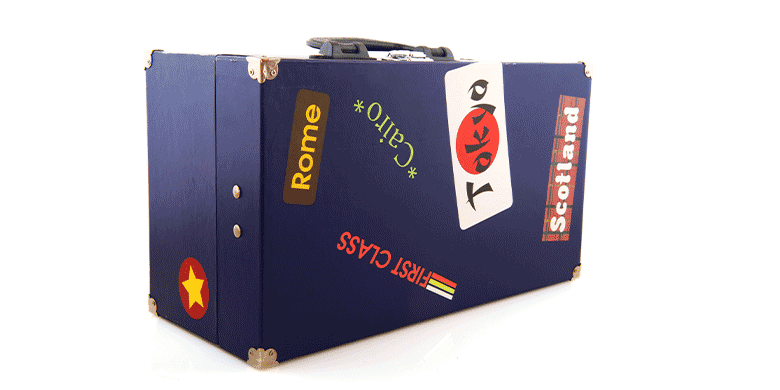
16 November, 2023
Global Confections: A Tour of Sweet Delights Around the World
In a world diverse in cultures and traditions, the universal love for confectionery stands as a testament to the delight these sweet treasures bring to people across the globe. A product of artistry and culinary evolution, confectioneries are revered in every corner of the world. Let us embark on a delightful journey to discover the world through its candies, touring unique confections that stand as icons of various cultures.
Europe and Its Cornucopia of Confectioneries
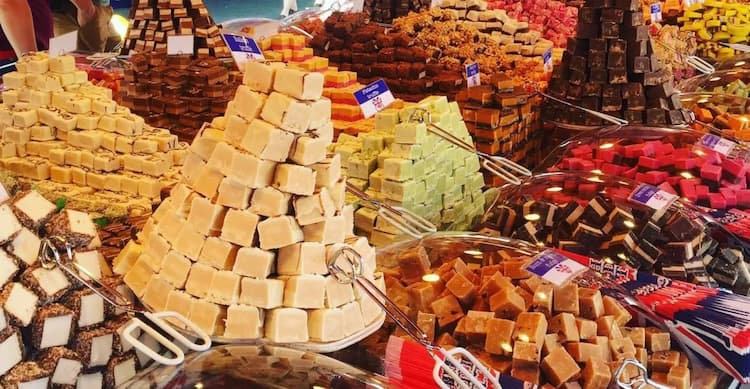
1) United Kingdom – Fudge
The exact origins of fudge are somewhat clouded in mystery, with various tales pinpointing its inception to the 19th century in the United States. However, it swiftly crossed the Atlantic, and the UK embraced this delightful confectionery, enhancing it with a range of traditional and modern flavours, and today it stands as a staple in the British confectionery landscape. The term 'fudge' is believed to have been coined from the phrase “to fudge something,” referencing a culinary mistake that resulted in the delightful discovery of this sweet treat.
At its core, fudge requires a simple concoction of most ingredients readily available in their kitchens - sugar, butter, and milk or cream. Over the years, the recipe has evolved to encompass a wide array of ingredients to churn out a variety of fudges. Vanilla and chocolate remain classic flavours, while modern culinary innovation has introduced a diverse palette including exotic flavours like lavender, sea salt, and various nuts and fruits.
- The Making of Fudge
Creating fudge is an art that requires precision and a meticulous approach. Here we break down the general process:
1) Preparation: The initial stage involves preparing a heavy-bottomed pan and lining a tray with parchment paper for setting the fudge.
2) Cooking the Base: Sugar, butter, and milk or cream are added to the pan and cooked over low heat, allowing the sugar to dissolve completely without burning. Constant stirring is essential to prevent any crystallisation of sugar.
3) Reaching the Soft Ball Stage: The mixture is then brought to a boil until it reaches the soft ball stage, which is between 113-115 degrees Celsius. This stage is critical as it ensures the perfect consistency for the fudge.
4) Cooling and Beating: Once the softball stage is reached, the mixture is removed from heat and allowed to cool for a few minutes. After cooling, the mixture is beaten vigorously until it becomes grainy and starts to set, encouraging the formation of a smooth and creamy texture.
5) Adding Flavourings: At this point, various flavourings, be they vanilla extract, chocolate, or other innovative ingredients, are stirred in to give the fudge its distinctive taste.
6) Setting: The fudge mixture is poured into the prepared tray and left to set, which can take several hours. Once set, it is cut into squares, ready to be savoured.
Fudge stands as a true delight in the UK’s confectionery offering, epitomising simplicity yet offering a rich and creamy experience with every bite. Its origins, albeit slightly mysterious, narrate a tale of happy accidents in the culinary world, giving us a versatile and beloved treat by many. The process of crafting fudge, involving heating and cooling its basic ingredients, results in a confectionery that melts in the mouth, offering a piece of the UK’s culinary tradition with each morsel.

2) Sweden - Swedish Fish
Swedish Fish made its debut in the 1950s, being a fruitful product of the Swedish company Malaco, which wanted to venture into the North American markets, with a seafood-shaped gummy candy that reflects Sweden's fishing history. The candy was originally marketed with a slogan that read “A friend you can eat.” This unique candy swiftly became a favourite, especially in the United States, becoming a sweet symbol of Swedish culinary creativity across the pond.
The primary ingredients in Swedish Fish are sugar, invert sugar, and corn syrup, which give the candy its signature sweetness and chewy texture. Other ingredients may include modified food starch, citric acid for a slight tartness, white mineral oil, and natural and artificial flavourings to create the iconic taste that has won hearts globally. Moreover, these fish-shaped treats stand out for being gelatin-free, making them a suitable choice for vegetarians and those avoiding animal-derived ingredients.
- The Making of Swedish Fish
The manufacturing process of Swedish Fish is meticulous, aiming to achieve the perfect balance of chewiness and flavour. Here is a step-by-step breakdown of the process:
1) Creating the Mixture: Initially, a mixture is prepared by combining sugar, invert sugar, and corn syrup, creating a base that is both sweet and slightly tart.
2) Adding Colour and Flavour: To this base, colourants and flavourings are added. The traditional Swedish Fish comes in a red or wine colour with a raspberry flavour, though now it is available in various colours and flavours.
3) Moulding: The mixture is then poured into fish-shaped starch moulds, which gives Swedish Fish its iconic appearance.
4) Setting and Cooling: The candy is allowed to set and cool, solidifying into a chewy consistency that is loved by many.
5) Coating: After demoulding, the candies are given a thin sugar coating, enhancing their sweetness and giving them a slightly glossy appearance.
They testify to Swedish innovation in the confectionery industry, with its vibrant hues and distinct fish shape reflecting the nation's historical connection to fishing. The simple yet iconic recipe has transcended borders, becoming a staple in candy aisles globally. Its delightful chewy texture and slightly tart taste, derived from a blend of ingredients including invert sugar and corn syrup, have secured its place in the hearts of both adults and children alike, offering a slice of Swedish tradition with every bite. The gelatin-free nature of this candy further broadens its appeal, allowing a wider audience to enjoy it, as it continues to swim in the global currents of the confectionery world.
North American Sweet Innovations
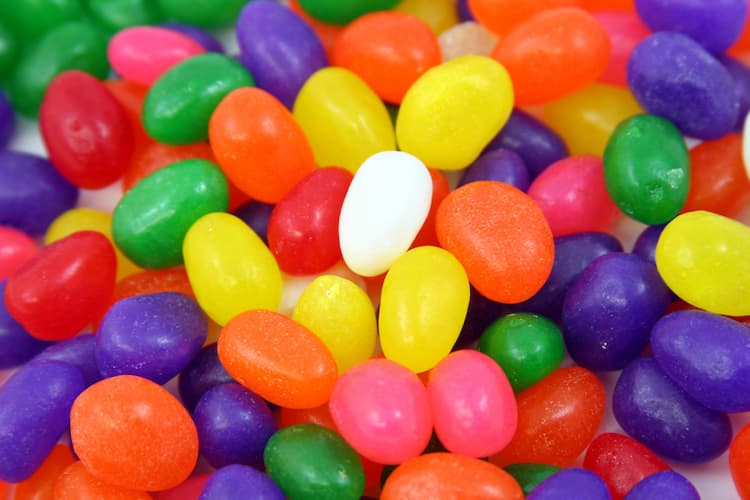
USA - Jelly Beans
Jelly beans have a rich history that traces back to the mid-19th century in the United States. Initially a popular treat during Christmas, these candies gained heightened popularity during the Easter season, becoming a staple in holiday baskets. The precise origin remains somewhat ambiguous, but it is generally agreed that jelly beans evolved from a combination of the Middle Eastern confection "Turkish delight" and the hard candy shell of Jordan almonds, a marriage of cultures producing a truly American candy.
The essential ingredients that give jelly beans their iconic chewy centre and hard outer shell include sugar, corn syrup, and starch. The modern manufacturing process also allows for the infusion of a myriad of flavours and colours, giving birth to a virtually endless variety of jelly beans that tantalise taste buds with unexpected delights with every bite.
- The Making of Jelly Beans
Creating jelly beans is a multi-step process that combines different textures and flavours, encapsulated in a tiny, bean-shaped candy.
1) Creating the Jelly Centre: The journey begins with the making of the jelly centre, where sugar, corn syrup, and starch are mixed together with flavourings to form a viscous mixture. This mixture is then poured into bean-shaped moulds and allowed to set until they firm up to form the soft, jelly centres.
20 Sugaring: Once the centres are ready, they are transferred to rotating drums where they are coated with a sugar syrup. This step is repeated several times to gradually build up the outer shell, ensuring a crunchy exterior to contrast the soft jelly centre.
3) Polishing and Colouring: After the sugaring process, the beans undergo a polishing stage where they are coated with a thin layer of wax, giving them a glossy appearance. Here, they also receive their vibrant hues, derived from various food colourings, giving each bean a distinct identity.
4) Flavour Infusion: The flavours are introduced at various stages during production. Some manufacturers add flavours to the jelly centre, while others infuse the sugar coating with flavours, offering a multi-layered flavour experience.
They vividly represent the American confectionery landscape, offering a burst of flavours and colours in a small, bean-shaped package. From their origins in the 19th century to becoming an Easter basket staple, jelly beans have travelled a fascinating path. Their production is meticulous, harmoniously bringing together soft and hard textures, a rainbow of colours, and a rich palette of flavours to offer a surprise with every bite. In the modern candy market, jelly beans continue to evolve, with new flavours constantly being introduced, ensuring that the legacy of this vibrant and delightful candy lives on, encapsulating the joy and sweetness of the American spirit in each tiny, glossy bean.
Asia's Sweet Diversities
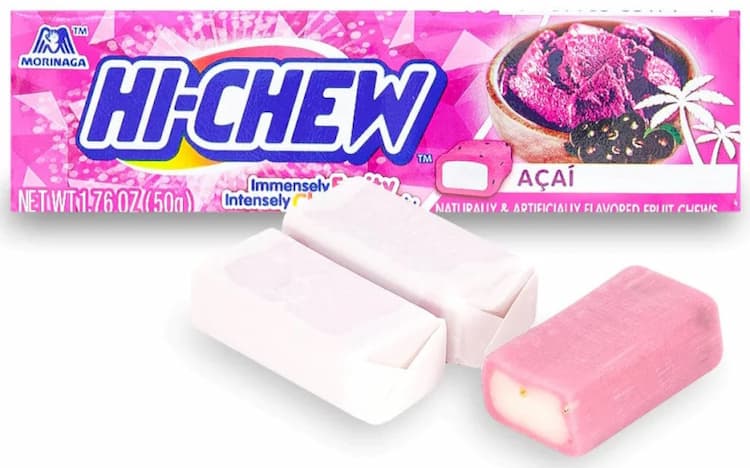
1) Japan – Hi-Chew
Hi-Chew candies were first introduced to the Japanese market by Morinaga & Co., a prominent confectionery company in Japan, in the 1970s. The inception of Hi-Chew was driven by the desire to create a chewy, gum-like candy that could be swallowed, bridging the gap between candies and chewing gums. Hi-Chew has since become a beloved treat in Japan, symbolising Japanese innovation in the confectionery sector and gaining immense popularity not only in Japan but globally.
The ingredients that lay the foundation for Hi-Chew's characteristic chewy yet dissolvable texture include glucose syrup, sugar, vegetable oil, and gelatin. The candies also contain concentrated fruit juices, giving them their natural fruit flavours and other flavourings and colourants that vary depending on the specific variant of the candy.
- The Making of Hi-Chew
The production process of Hi-Chew candies follows a pathway to achieve that signature chewy texture with a juicy burst of flavour.
1) Creating the Base: The initial step involves the creation of a base mixture involving glucose syrup and sugar, forming the core chewy component of the candy.
2) Infusion of Flavours: After preparing the base, it is infused with concentrated fruit juices or other flavouring agents to instil the vibrant and rich flavours that Hi-Chew is known for.
3) Shaping and Cutting: The flavoured mixture is then shaped into long, narrow rods, which are subsequently cut into individual candy pieces, resembling miniature bars.
4) Centre-Filled Varieties: While the original Hi-Chew features a homogenous texture, some varieties come with a centre-filled design, where a liquid or gel centre is enveloped by the chewy outer layer, offering a burst of flavour as one bites into the candy.
Packaging: The final stage in the production line is the packaging process, wherein the individual pieces are wrapped and packaged into the familiar Hi-Chew packs.
Over the decades, it has grown to become a quintessential part of the Japanese confectionery landscape. Its unique chewy texture strikes a balance between candy and gum, and its vibrant variety of flavours derived from natural fruit juices offers a delightful sensory experience with every bite. It stands as a true testament to Japanese innovation in the confectionery world, continuing to evolve with new flavours and varieties that cater to the ever-changing consumer preferences while retaining its essence of offering a burst of joy with its chewy, fruity delights. Whether you're enjoying the original series or exploring the newer, centre-filled varieties, it promises a chewy, juicy journey of flavours, straight from the heart of Japan to the world.
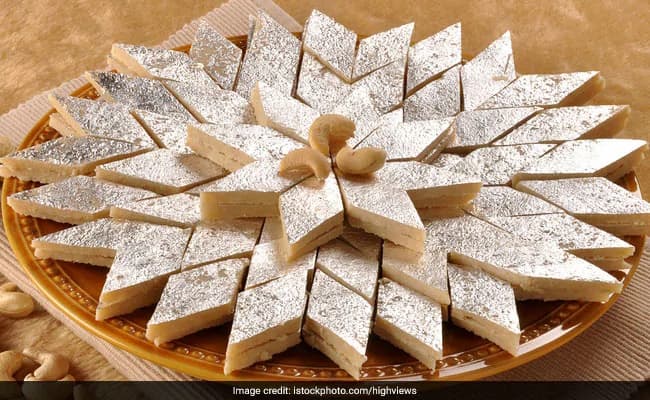
2) India - Kaju Katli
Kaju Katli, a cherished delicacy, has entrenched itself deep within the culinary traditions of India. Literally translated as "Cashew Slice," this sweet dish has been gracing Indian festivities and celebrations for generations, being especially prominent during the festival of Diwali. Though the exact origins remain veiled in history, it is widely believed to have originated in the northern parts of India.
The elegant Kaju Katli is crafted using a simple yet regal set of ingredients, with cashews and sugar forming its base. Other ingredients include a dash of ghee (clarified butter) and cardamom powder, which imparts a delicate fragrance to the sweet. It is often adorned with a thin layer of edible silver leaf (varq), adding to its rich appeal.
- The Making of Kaju Katli
1) Cashew Powder: The first step involves grinding cashew nuts to a fine powder, ensuring that it remains dry and does not turn into a paste.
2) Sugar Syrup: A sugar syrup is prepared using sugar and water boiled to achieve a one-string consistency, which is pivotal in getting the perfect texture for the Kaju Katli.
3) Mixing and Cooking: The cashew powder is then introduced into the sugar syrup and ghee and cardamom powder. This mixture is continuously stirred on a low flame until it starts leaving the sides of the pan, signalling that it is ready to be set.
4) Setting: Once the mixture achieves the right consistency, it is transferred onto a greased surface, where it is rolled out to a thickness of about a centimetre, forming a uniform layer.
5) Cutting into Diamonds: After allowing it to cool and set for a while, it is cut into diamond shapes, a traditional choice for Kaju Katli, using a sharp knife.
6) Silver Leaf Decoration: As a finishing touch, each piece is adorned with a thin layer of edible silver leaf, imparting a royal touch to the sweet.
It is more than just a sweet; it embodies Indian tradition, representing joy, celebration, and the rich cultural heritage of India. Each diamond-shaped slice offers a heavenly taste of richness and purity, as it melts softly in the mouth, releasing the subtle notes of cashews and cardamom.
As India embraces modernity, Kaju Katli too has seen variations, with the introduction of different flavours and ingredients, like the infusion of chocolate or the incorporation of other nuts, giving a modern twist to this timeless classic.
Whether served during festivals, special occasions, or simply enjoyed as a luxurious treat, Kaju Katli stands as a testimony to the richness of Indian culinary heritage, offering a slice of tradition, crafted with simplicity, yet unparalleled in its flavour and texture, a true jewel in the crown of Indian confectionery.
Australian Iconic Confectioneries
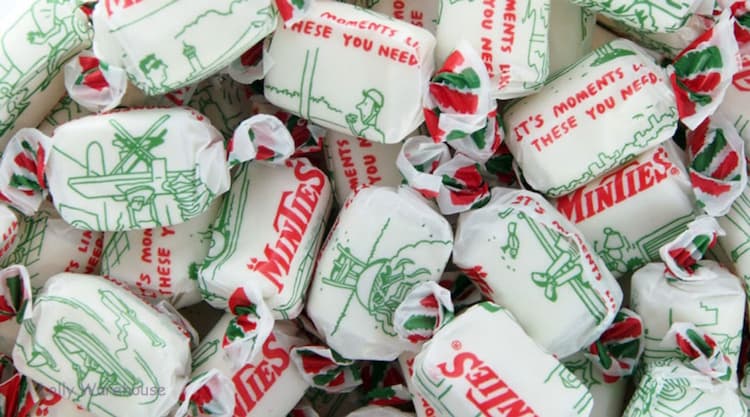
Australia – Minties
Minties hold a special place in the cultural fabric of Australia, firmly establishing themselves as a classic Australian confectionery since their inception in the early 1920s. Minties were created by James Stedman, the son of the founder of the prominent Stedman’s confectionery company. Over nearly a century, Minties have been associated with fun and enjoyment, easily recognised by their distinctive white wrappers adorned with various illustrations depicting "Moments like these" which resonate with Australians across generations.
They are essentially hard, white, mint-flavoured candies that deliver a refreshing burst of mint with each chew. The main ingredients are sugar, glucose syrup, and peppermint oil, which gives Minties their characteristic refreshing taste. The simple recipe has remained largely unchanged, preserving the traditional taste people have loved for decades.
- The Making of Minties
Let's delve into the precise manufacturing process that results in these delightful treats:
1) Preparing the Base: The initial stage involves the preparation of the base by blending sugar and glucose syrup to form a smooth mixture.
2) Infusing the Mint Flavor: Once the base is prepared, it is infused with peppermint oil, which lends the refreshing and invigorating mint flavour that is synonymous with Minties.
3) Shaping and Setting: The mint-infused mixture is then moulded into its iconic rectangular shape and allowed to set until it achieves the desired hardness.
4) Packaging with Iconic Illustrations: A significant part of Minties' charm lies in their packaging. After being shaped and hardened, each candy is wrapped in a distinctive white wrapper adorned with one of the various 'moment' illustrations that depict light-hearted and humorous situations, adding an element of fun and nostalgia.
They have evolved to be more than just candy; they represent a slice of Australian culture and history, fostering shared memories and nostalgic moments through the decades. The candy’s hard yet chewy texture invites you to enjoy it slowly, savouring the burst of refreshing mint as it gradually softens in the mouth.
Beyond just a candy, Minties offer a walk down memory lane for many Australians, bringing with them a wave of nostalgia with every unwrapping. Their signature packaging, with playful illustrations capturing 'Minties moments,' not only offer a refreshing chew but a chuckle, reflecting the Aussie sense of humour and a love for life’s lighter moments.
Whether enjoyed during a movie, shared amongst friends, or savoured solo, they continue to be a cherished part of the Australian confectionery landscape, offering a refreshing pause in daily life with their invigorating mint flavour and the joyous moments encapsulated in their wrappers, truly making moments like these Minties moments.
Latin American Sweet Creations
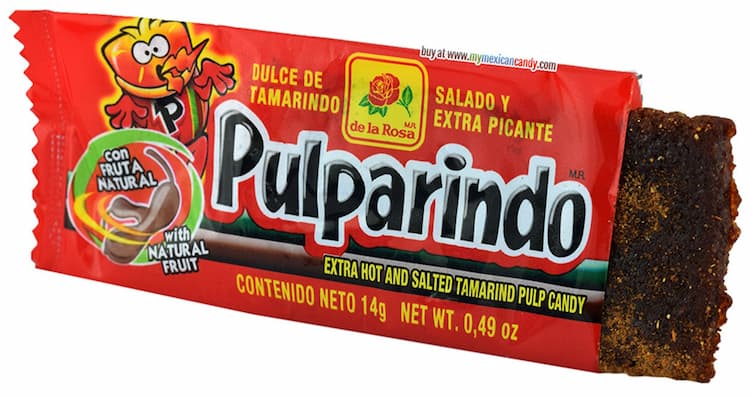
Mexico - Tamarind Candy
Tamarind candy, a staple in Mexican confectionery, owes its existence to Mexico's rich biodiversity and culinary traditions. Utilising tamarind, a fruit native to Africa but widely embraced and cultivated in Mexico for centuries, these candies epitomise the fusion of sweet, sour, and spicy flavours that characterise Mexican cuisine. The incorporation of tamarind into candy is not just a tale of culinary innovation but a story of Mexico's rich multicultural tapestry woven through centuries of history.
The cardinal ingredient in this candy is the pulp derived from the tamarind pod, renowned for its tart and fruity flavour. Other ingredients often used include sugar to counterbalance the natural tartness of tamarind, and a variety of spices, such as chili powder, to add a kick of heat, and salt to enhance the intricate balance of flavours. Some variants might include additional flavourings like lime to add a zesty dimension to the candy.
- The Making of Tamarind Candy
The preparation process embodies a harmonious blend of tradition and artistry:
1) Extracting Tamarind Pulp: The process begins with the extraction of pulp from the tamarind pods, which is then sieved to remove seeds and fibres, resulting in a smooth paste.
2) Formulating the Flavour Base: The tamarind pulp is mixed with sugar, forming a well-balanced sweet and sour base. Depending on individual recipes, this base might be enriched with a sprinkle of salt or a splash of lime juice, amplifying the vibrant flavour profile of the candy.
3) Infusing Heat with Spices: To add a spicy dimension, chilli powder is often incorporated, introducing a warm heat that complements the sweet and sour notes.
4) Moulding and Setting: Once the mixture attains the desired balance of flavors, it is shaped into various forms - from simple spheres to more intricate designs. After shaping, the candies are left to dry and harden to a chewy consistency.
5) Packaging: After drying completely, the candies are packaged, ready to be distributed and savoured. Depending on the producer's preference, they may be individually wrapped or presented in bulk.
Tamarind candy is a vibrant representation of Mexico's rich culinary landscape, offering a burst of tangy, sweet, and spicy flavours in every bite. It showcases the Mexican tradition of balancing contrasting flavours, bringing a unique and unforgettable tasting experience.
The diverse textures and flavour profiles available cater to a broad palate, appealing to lovers of both sweet and spicy treats. Whether enjoyed as a casual snack or presented as a festive gift, it remains a cherished staple, bringing a burst of Mexican flavour to every occasion. It is not just a candy, but a celebration of Mexico’s rich history and culinary innovation, wrapped in a delightful, tangy package that promises a roller coaster of flavours with each bite.
Conclusion
Our global tour of confectioneries showcases just a little of the rich tapestry of sweet delights available throughout the world, each bearing the unique stamp of its place of origin, bringing to the fore the culinary diversities and the universal love for sweets. These candies, ranging from the chewy textures of Hi-Chew to the creamy delight of fudge, offer a sensory journey across continents, narrating tales of traditions, and culinary craftsmanship. It invites us to explore the world one sweet bite at a time, encouraging a deeper appreciation of cultures' diversity and richness through their traditional confectioneries.
The Confectionery Only Team
